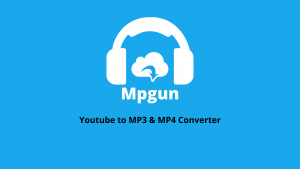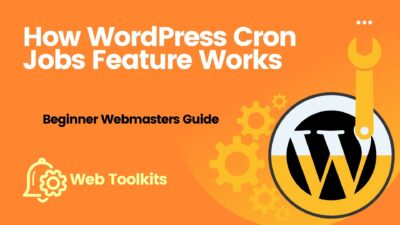In WordPress, you can put content on your site as either “Website Posts” or “Website Pages”. When you’re writing a regular blog entry, you write a post. Posts, in a default setup, appear in reverse chronological order on your blog’s home page. In contrast, pages are for non-chronological content: pages like “About” or “Contact” are good examples.
Pages live outside of the normal blog chronology and are often used to present timeless information about yourself or your site — information that is always relevant. You can use Pages to organize and manage the structure of your website content. Not forgetting, there’s a code evaluation each time there’s a website page visit by a lead user.
And then again, upon each new visit, there’s content generation. In addition to the common “About” and “Contact” pages, other examples include “Copyright”, “Disclosure”, “Legal Information”, “Reprint Permissions”, “Company Information” or “Accessibility Statement”.
Website Pages Taxonomy Design Features
By all means, a web page can be either static or dynamic. Static pages, such as a regular HTML page that you might create with Dreamweaver, are those which have been created only once. Thus, they do not have to be regenerated every time a person visits the page. In contrast, dynamic pages, such as those you create with WordPress do need a regeneration view every time.
And also, the author has to make a specific code for what to generate on the page, but not the actual page itself. All these use extensive PHP code. In general, pages are very similar to posts in that they both have titles and content. WordPress Theme template files maintain a consistent look throughout your site.
Pages, though, have several key distinctions that make them different from posts. Specifically, a website page (or a specific post) can be set as a static front page. Usually, websites that are set up in this way often have a secondary page defined. More so, on which the latest blog posts are displayed.
Technically, the interpretation of both Website Pages and Website Posts can be quite different by site visitors and search engines. Commonly, most search engines like Google and Bing place more relevance to time-dependent site content. For instance, in terms of a blogging site, a newer article on a certain topic may be more relevant than a static page.
What Website Pages Are:
- Website Pages are for content that isn’t specifically time-dependent, or which isn’t “blog content”
- They can be organized and enhanced into pages and subpages webpage taxonomy plugins
- Pages can use different page templates, including template files, Template Tags, and other PHP code
- More sophisticated themes may provide a wider range of adjustments or display options for individual pages
- It’s quite possible to make a website using WordPress CMS that only contains pages
- You can put Template Tags and PHP code into a Page Template file
Pro Tip: Always be careful while integrating PHP code directly into your web page or site post content. For one thing, it may introduce a security problem or an unexpected error on your whole website.
What Website Pages Are Not:
- Pages are not posts, so they don’t appear in the time-structured views within a blog section of a website
- Pages by default do not allow taxonomy (categories, tags, and any custom taxonomies) associations
- Their organizational structure comes from hierarchical interrelationship — not from a categorization system
- Pages are not files. They are stored in your database, just like posts
- You cannot put Template Tags and PHP code into the Page or Post content without using a Plugin
- Pages are not included in your site’s “feeds”. (e.g. RSS or Atom.)
Since we eat and breathe content design here at jmexclusives, we’ll base our knowledge on WordPress Pages. Almost everything in WordPress is generated dynamically, including Pages.
The Dynamic Nature Of WordPress Site Pages
Everything published in WordPress (Posts, Pages, Comments, Blogrolls, Categories, etc…) is stored in the MySQL database. When the site is accessed, the database information is used by your WordPress Templates from your current Theme to generate the web page being requested. An example of a static page might be an HTML document.
More so, without any PHP code. Unfortunately, the problem with purely static pages is that they are difficult to maintain. Changes you make to your WordPress settings, Themes, and Templates will not be propagated to pages coded only in HTML. The Page feature of WordPress was developed to alleviate this problem.
By using Pages, you no longer have to update your static pages every time you change the style of your site. If written properly, your dynamic Pages will update along with the rest of your blog. But, despite the dynamic nature of Pages, many people refer to them as being static. They are actually called “pseudo-static” web pages.
In other words, a Page contains static information but is generated dynamically. Thus, either “static,” “dynamic,” or “pseudo-static” may be validly used to describe the nature of the WordPress Page feature. By the same token, you can also utilize WordPress Subpages Widget Plugins to achieve the same goal.
Why Website Pages Taxonomy Structure Matters
Overall, we often encounter sites with Tags & Categories Structures that are completely unmanaged. Even large news sites can suffer from over usage of tags and categories. Tags and categories are both examples of a site taxonomy. However, categories, tags, and archives are all related and can be easily confused.
Categories and tags help us structure content on our website, and they’re essential for SEO. When used correctly, a good taxonomy system can boost your site’s SEO. The opposite is also true: when used wrong, it’ll break things.
Basically, in SEO, Site Taxonomy is a way to organize groups of posts and custom post types. The word taxonomy comes from the biological classification method called Linnaean taxonomy. By default, WordPress comes with two taxonomies called categories and tags. You can use them to organize your blog posts.
In terms of web content, a good Site Taxonomy SEO Audit presents content to your readers and search engines that make it accessible, findable, and purposeful. More so, by considering how the website content is classified, organized, connected, and related. In other words, an overall site taxonomy SEO audit matters – a lot.
Learn More: Site Taxonomy SEO | Categories, Tags & Archives Audit Tips
Poor website design cannot be trumped by good content, the right keywords, or savvy social media marketing. Good website taxonomy also means that you’ve structured your content so that related content is connected. This makes it easier for users and search engines to find the site information they want. After all, this is why you created the website.
So that you can provide informative content about your company, products, and services. Website taxonomy matters for the deeper implications it has to your SEO, search engine rankings, and helping to establish your website as the go-to resource for your industry. Website taxonomy matters for the deeper implications it has to your SEO, and rankings.
As well as the role it has in helping to establish your website as the go-to resource for your industry. Your website taxonomy has direct impacts on your EAT and YMYL scores. And as you know, these scores, as determined by Google’s Search Quality Rater team, determine how well you rank in search engines.
Smart website taxonomy does the following:
- First, it creates logical and purposeful relationships across your website content
- And then, this gives your content meaning, authority, and relevance
- Lastly, this helps establish your website in the eyes of search engines and readers as the go-to resource for your niche.
Breadcrumbs too play an important role in this type of setup. Each individual item should link back to the nearest category. This shows Google the structure of your site, but it also enforces the authority of the category page on that overall topic. Having the URL structure reflect the category can greatly help in your site SEO audit strategy.
More so, if the topics of your category add value to the product or post. But beware: don’t change your URL structure if you have an existing site. The “cost” of redirecting all those URLs outweighs the benefits of changing the structure. It’s far wiser to just use the breadcrumbs functionality that the Yoast SEO Plugin offers.
Is Site Taxonomy And SEO Connected?
Although taxonomy archives are very important, they usually don’t get the love they deserve. You want the focus to be on the products or posts presented on this page, but it can be beneficial to add content to the page as well.
You should be mindful of what content you add though. Beforehand, it was recommended to just add a bit of introductory content at the top. And then, have the rest of your content at the end of the page. But nowadays, it’s clear that this can actually confuse search engines and hurt the rankings of your page.
SEO is the best friend your website taxonomy needs – it tells you what your readers and search engines are looking for. With this information, you can determine how to best structure your website content. For example, SEO analysis might reveal that what you assumed were minor interests, are actually the main interests of your readers.
Related Topic: How Google Search Works | A Novice SEO Webmaster Guide
And now, you can go on to change your website structure presentation for this relevant information at the top or second level. Suffice to say, SEO analysis also tells you the keywords and terms your readers are looking for the most.
This is quite useful in guiding the site menus, categories, metadata, and tags to your content readers. In nutshell, SEO and website taxonomy are great friends – allowing you to design your website around how your readers are thinking, searching, clicking, and buying. That’s why even WordPress CMS has its unique way of representing this.
Website Pages Hierarchy Structure Best Practices
Just as you can have subcategories within your Post Categories, you can also have subpages within your Pages – whilst, creating a hierarchy of pages for your website. For example, a WordPress site for the Web Tech Experts like us may feature individual Pages for each continent. As well as categories to which the agency can make support arrangements.
Under the Page titled “SEO,” we could have subpages for Copywriting, Auditing, SERPs, Optimization, Ranking, Toolkits, etc. Another parent Page “Design” would feature Website, Content, Graphics, Apps, etc. In the end, the structure of these Website Pages on the Sitemap menu would then look like this:
SEO
- Copywriting
- Auditing
- SERPs
- Optimization
- Ranking
- Toolkits
Design
- Websites
- Content
- Graphics
- Apps
Posts are part of a blog and are displayed in reverse chronological order (newer entries first). They are normally organized with categories and tags. Pages are one-off or standalone content that is not part of a blog. For example, the About Us or the Contact Us page can be hierarchical. Meaning, you can organize them with parent and child pages.
Typically, business websites use Pages to build a website structure. This way they can build a website without creating a blog. The Permalinks of your Pages will also reflect this Page hierarchy. In the above example, the Permalink for the Copywriting Page would be .
To create a new Page, you’ll just need to log in to your WordPress installation with sufficient admin privileges in order to create new pages. And then, select the Pages > Add New option to begin writing a new Page.
Follow these simple steps:
- Go to Administration > Pages > Add New screen.
- In the right menu, click the “Page Parent” drop-down menu.
- The drop-down menu contains a list of all the pages created on your site.
- Select the appropriate parent page from the drop-down menu.
- By doing so, you’ll make the current Page a child Page.
- Add some content to the subpage, and then click the ‘Publish’ button when ready.
Those who want to add a blog to their content marketing strategy can still do so. Particularly, by simply creating a separate blog page for their site. However, if you have too many pages, then it becomes difficult to organize them.
For this reason, this is where a child page need comes in. When your Pages are listed, the Child Page will be nested under the Parent Page. You can create a broader page as a ‘Parent’ and then add child pages to better organize your website structure and layout. A parent page like ‘About’ can have team, history, careers, and other pages as child pages.
Any child page can also have their own child pages and so on. This way you can build relationships between your pages and create a proper website structure. You can take a look at how to create a child page in WordPress in detail.
Final Thoughts:
As a great CMS software, WordPress offers various templates for categories, tags, or custom taxonomies. See more details on their structure and usage on the Taxonomy Templates page. Eventually, it’s very possible to create new hierarchies in WordPress. You may, for example, create an author taxonomy on a book review site.
Or rather, an actor taxonomy on a film site. As with custom post types, it is recommended that you put this into account using a functionality plugin. This ensures that when the user changes their website’s design, their content is preserved in the plugin. Are you tired of visiting websites and not being able to find the information I need quickly?
Resource References:
- Technical SEO | Webmasters Simple Steps To Do It Right
- Website Menu Design | How To Do It Right In Simple Steps
- How A Website Design Is Done | Simple Steps Beginners Guide
- WordPress SEO | A Full Guideline On How To Do It Right
- How to create a link in the bio landing page to drive traffic
It’s quite frustrating for a poor website design that makes it impossible for search engines and readers to find the quality content already written too. Now, it’s time to put an end to the bad site taxonomy SEO audit strategy. Give your readers what they want – with answers to their questions on an easy-to-navigate website.
Always remember, just because the website structure, menus, navigation, and categories make sense to you – doesn’t mean they make sense to your readers and the search engines. This is the ideal opportunity for you to Consult Us to know what our web agency can do for you. We are sure to make everything work just right for you.
That’s it! Everything you’ll need in order to structure and design both your hierarchy menu and sitemap for your website pages. So, was this article helpful? How could we improve it? Is there something else you feel is missing? Well, you can share your additional thoughts, contributions, or related questions in our comments section.








